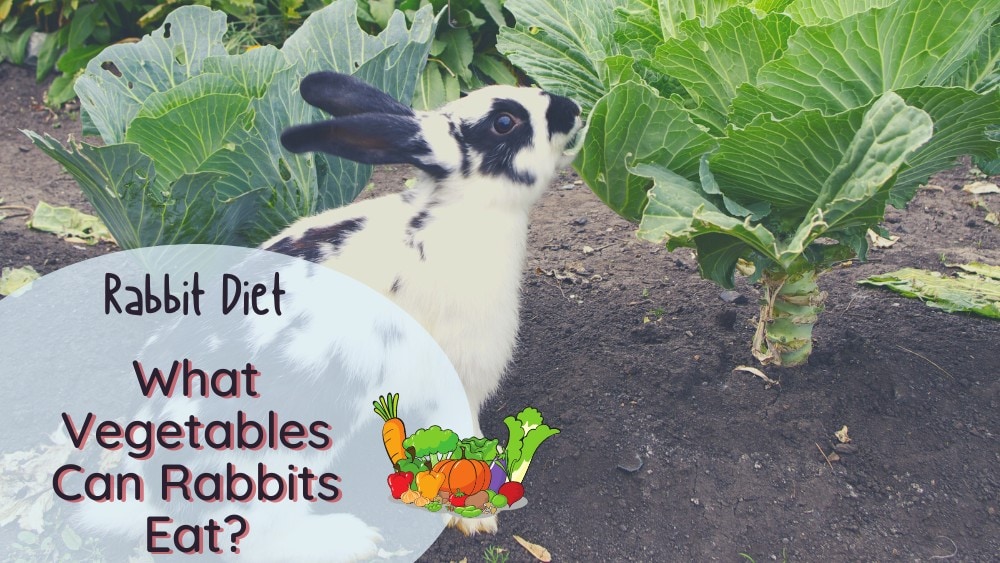There’s a huge assortment of vegetables that are safe for rabbits to eat – but it might take a while to work them all into your rabbit’s diet.
Most veterinarians recommend that pet rabbits eat only a spoonful of commercial pellets a day and get the majority of their vitamins from fresh vegetables. But if you adopted a bunny from a breeder or a pet store, it probably was raised on pellets and might never have tasted juicy vegetables!
If your rabbit is new to fresh produce, start with low-oxalate leafy greens and gradually introduce a new vegetable from this list every 3-7 days.
What Vegetables Can Rabbits Eat?
Rabbits can eat veggies from each of these categories daily.
- Low oxalate leafy greens (dark lettuces, kale, watercress, arugula, endive).
- Brassicas (cabbage, bok choy, brussels sprouts, radish tops).
- Herbs (dill, basil, mint, cilantro, borage)
- Starchy Veggies (squash, carrot, celery, pumpkin, zucchini, pea pods, bell pepper).
High Oxalic Acid Greens: Rabbits can eat spinach, parsley, dandelion greens, swiss chard and other leafy greens that have high to moderate oxalic acid, but only once or twice per week. Greens high in oxalic acid and calcium can cause urinary tract disease in bunnies
The Best Vegetables for Rabbit Diets
These are the vegetables I give my bunnies on rotation, along with tips on how to feed them.
1. Dark Red or Green Lettuce (including Romaine)
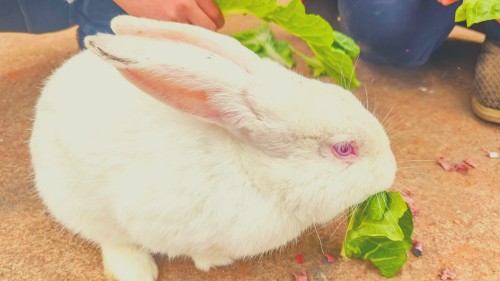
| Parts that are safe: | whole lettuce plants |
| Frequency: | daily |
Rabbits can eat dark red or green lettuces including romaine, butter, frisee varieties. Do not feed your rabbit crunchy white (iceberg) lettuce. Iceberg lettuce has little nutritional value and its high water content can cause loose stools.
2. Kale
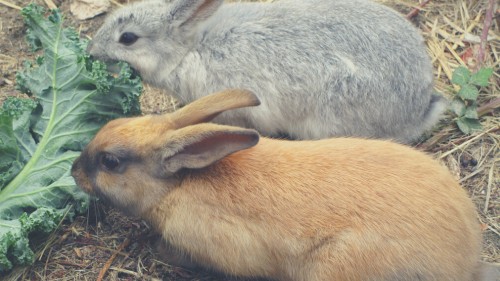
| Parts that are safe: | whole plant |
| Frequency: | 3-4 times per week |
Sources are mixed on whether or not kale is a good vegetable for rabbits to eat daily. After many years of research on rabbit diets, my biggest concern with kale is that it’s high in calcium. If your rabbit struggles with bladder sludge, you may want to limit kale. Other bunnies seem to handle this superfood very well.
3. Watercress
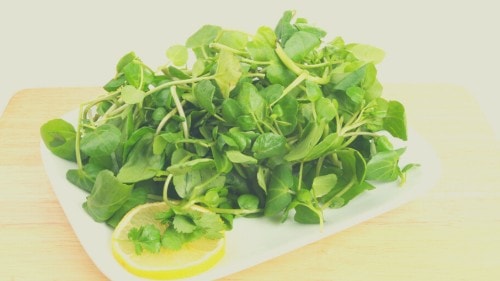
| Parts that are safe: | leaves |
| Frequency: | safe to feed daily once introduced slowly |
Watercress is uncommon in American supermarkets – but it shouldn’t be! This wonderful peppery leafy green is full of vitamins and there are no concerns about feeding it to rabbits.
4. Arugula
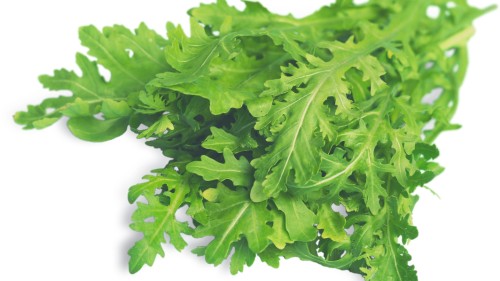
| Parts that are safe: | whole plant including flowers |
| Frequency: | 3-4 times per week |
Known as “rocket” in some parts of the world, arugula is a great way to spice up your rabbit’s diet. If the arugula in your garden has “bolted” and is flowering, rabbits can eat the blossoms as well as the leaves.
5. Dandelion Greens
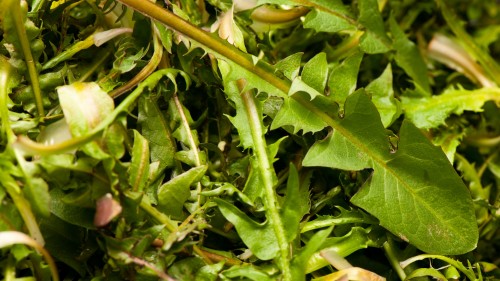
| Parts that are safe: | whole plant excluding roots. |
| Frequency: | 2-3 times per week |
Rabbits can eat dandelion stems, flowers, and leaves. Leaves are higher in oxalic acid, so don’t give them on days when you’re feeding spinach or chard. Make sure you harvest dandelions that have not been sprayed with pesticides or fertilizers.
6. Endive
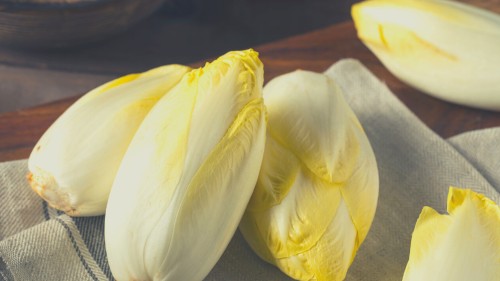
| Parts that are safe: | leaves |
| Frequency: | 3-4 times per week |
What is endive anyway? It’s a light green leafy veggie in the chicory family that both you and your bunnies should try! Make sure to serve it to your rabbit without dressing, though.
7. Fennel
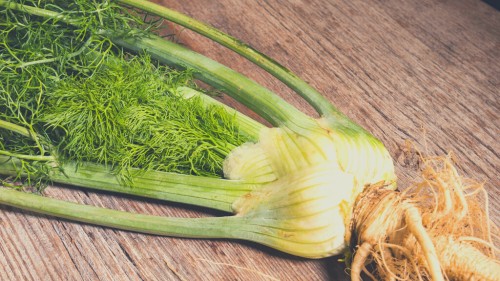
| Parts that are safe: | bulb, frilly leaves |
| Frequency: | 3-4 times per week |
Fennel or anise is another lesser-appreciated vegetable that is crisp, flavorful, and nutritious. Rabbits can eat both the light green bulb and the dark green frilly tops.
8. Celery
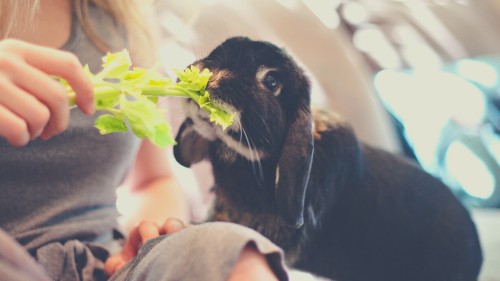
| Parts that are safe: | stalks, leaves |
| Frequency: | 2-3 times per week |
Celery doesn’t provide a lot of nutrition, and its high water content can upset rabbits’ stomachs if they eat too much of it. But fed in moderation, celery is a fun addition to bunny salads.
9. Spinach
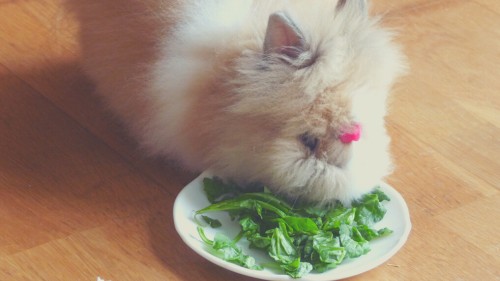
| Parts that are safe: | leaves, blossoms |
| Frequency: | 1-2 times per week |
You need to be careful with spinach and its relatives beet, chard, and amaranth. While it’s full of beneficial nutrients, the oxalic content in spinach is so high that you may decide to avoid it entirely for bunnies.
10. Bell Pepper
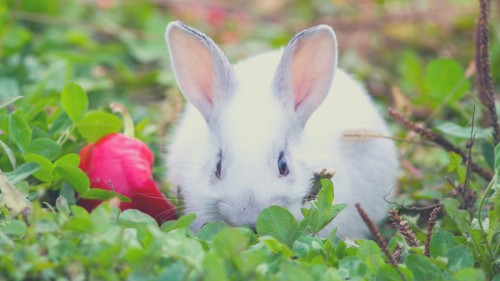
| Parts that are safe: | flesh of fruits |
| Frequency: | daily |
Bell peppers are an unexpected member of this list, but the flesh of sweet peppers is entirely safe for rabbits. Do not give bunnies the seeds or leaves of a pepper plant, and avoid peppers with even a little bit of heat.
11. Herbs
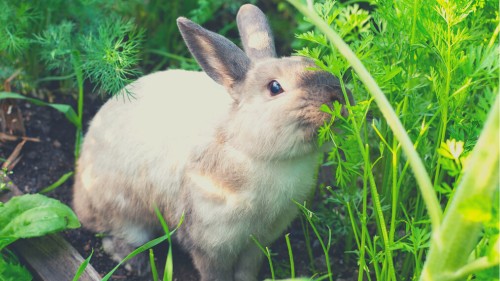
| Parts that are safe: | whole plant in most cases (research each herb) |
| Frequency: | daily |
Rabbit salads don’t have to be boring! Mix them up with rabbit-safe herbs like mint, dill, cilantro, borage, lemon balm, perilla, rosemary, thyme, oregano, or chicory.
12. Zucchini
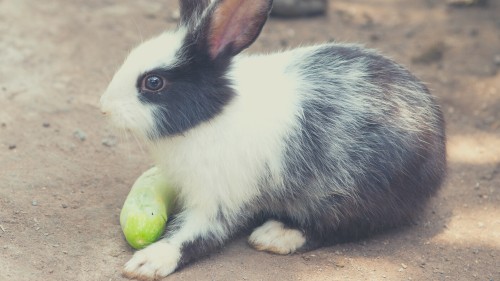
| Parts that are safe: | flesh, peel, blossoms, leaves |
| Frequency: | small amount daily |
Zucchini is full of vitamins and low in starch, so it’s one of the best non-leafy vegetables for rabbits. Bunnies can eat the blossoms and leaves of the zucchini plant, as long as there’s no mildew on them. Always feed zucchini raw.
13. Winter Squash
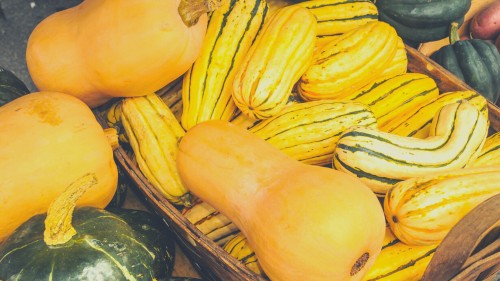
| Parts that are safe: | blossoms, leaves, rinds, flesh. |
| Frequency: | 1-2 times per week |
Rabbits can eat small amounts of winter squash like acorn, butternut, and spaghetti squash. Some of these are very high in sugar, so should be treated more like a fruit than a vegetable.
Rabbits can eat squash leaves and blossoms. Some people feed their bunnies the seeds. Others regard them as a choking hazard and remove them.
14. Pumpkin
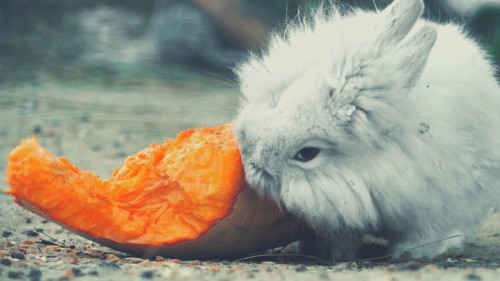
| Parts that are safe: | stalks, leaves |
| Frequency: | 2-3 times per week |
Rabbits may take a while to get used to raw pumpkin, but most bunnies love it. Rabbits can eat the flesh and rind of edible pumpkins. Do not feed your rabbits ornamental gourds not grown for consumption.
15. Cucumber
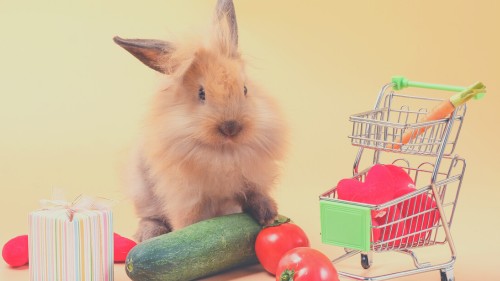
| Parts that are safe: | peel, seeds, flesh, plant leaves, blossoms |
| Frequency: | 2-3 times per week |
Cucumbers are a versatile bunny food. Rabbits can eat the leaves of a cucumber plant as a leafy green, or enjoy the flesh (along with seeds and peel) of the cucumber fruits. Don’t feed more than 1-2 slices of cucumber at a time, so your rabbit’s stomach doesn’t get too full of watery food without sufficient fiber to balance it.
17. Cabbage
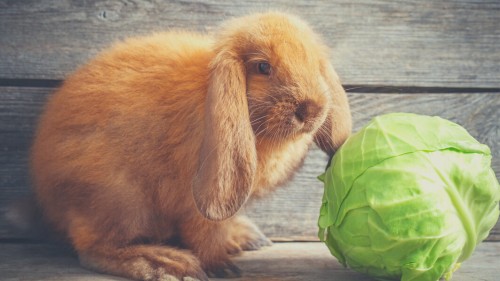
| Parts that are safe: | whole plants. Red or green. |
| Frequency: | 3-4 times per week |
Cabbage is in the brassica family of vegetables. Brassicas can cause gas and thyroid problems if fed in large volumes to rabbits. But mixing a handful of cabbage or other brassicas into a rabbits’ hay-based diet is unlikely to cause issues. Just be aware of which vegetables are members of this family and try to rotate them.
18. Broccoli
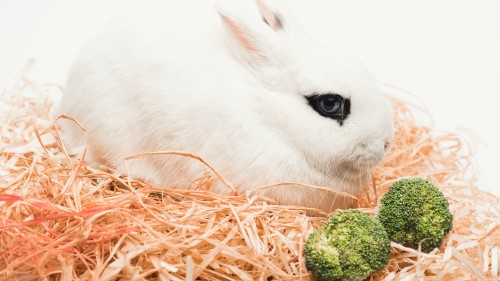
| Parts that are safe: | blossoms, florets, leaves, stems |
| Frequency: | 3-4 times per week |
The healthiest part of broccoli for rabbits is the leaves. Rabbits can eat the florets (or blossoms once they’ve opened), stems, and sprouts of broccoli. Rabbits can also eat baby broccoli or broccolini without trouble.
19. Brussels Sprouts
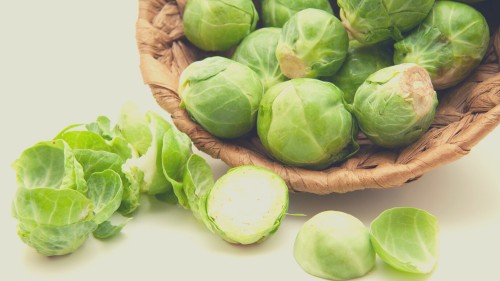
| Parts that are safe: | stalks, leaves |
| Frequency: | 3-4 times per week |
Like broccoli and cabbage, brussels sprouts are a member of the cruciferous or brassica family of vegetables. At my house, rabbits like to munch on raw brussels sprout trimmings, but they can eat the whole plant.
20. Bok Choy and Asian Greens
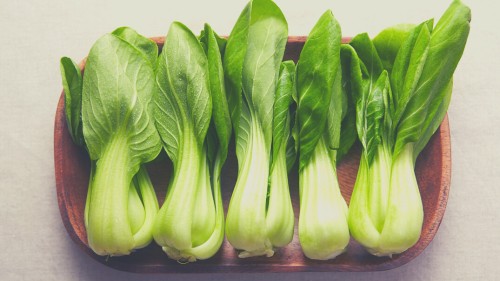
| Parts that are safe: | whole plant |
| Frequency: | 4-5 times per week |
Bok Choy and greens like yu choy, Chinese broccoli, and tatsoi are all members of the brassica family. Your bunny can enjoy these greens as long as you mix them with leafy greens (like dark green lettuce) that are not brassicas.
21. Pea Pods and Leaves
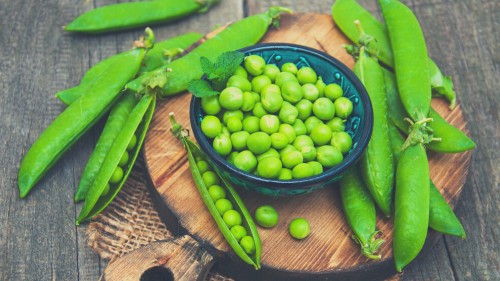
| Parts that are safe: | pea leaves, blossoms, and pods without developed seeds |
| Frequency: | 3-4 times per week |
Have you ever tried the green leaves of pea plants? They’re sweet and tender and bunnies adore them. Rabbits can also eat Chinese snow pea pods – flat pods without developed peas inside. Rabbits should avoid eating developed pea seeds for their high starch content. (Legume seeds in general are not recommended for rabbits.)
22. Carrots
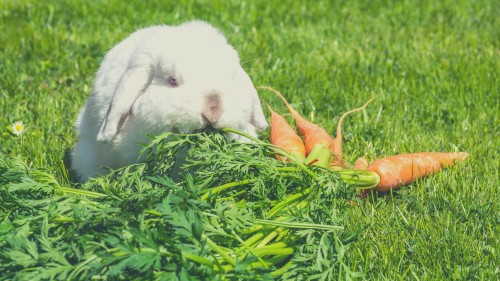
| Parts that are safe: | stalks, leaves |
| Frequency: | 2-3 times per week |
And, finally, yes. Your bunny can eat carrots. That is, your bunny can eat a slice of a carrot. Carrots are very high in sugar, so you should regard them as treats, not dietary staples. Carrot tops can be given in moderation, rotated with other high-oxalate leafy veggies.
Frequently Asked Questions
How Many Vegetables Should Rabbits Eat?
Once rabbits are acclimated to a number of different vegetables, fresh veggies should make up about 15-20% of a rabbit’s daily diet. Small adult bunnies should eat about 1 cup of “salad” per day, and large bunnies can eat up to 2 cups.
You need to be more careful about introducing vegetables to rabbits under 4 months old. Baby rabbits are prone to life-threatening digestive upset if their diet changes too quickly.
What are the Best Leafy Greens for Rabbits?
My favorite leafy greens for rabbits are herbs like cilantro and dill, fennel, watercress, endive and dark lettuces like romaine. Most of my rabbits get kale regularly as well.
What Vegetables are Dangerous for Rabbits?
There are a few vegetables that can kill your rabbits. Anything in the allium family like onions, leeks, chives, and garlic are dangerous for rabbits.
Rhubarb is so high in oxalic acid that it is poisonous for rabbits. Some herbs are also toxic. See our full list of Dangerous Foods for Rabbits.
Final Thoughts
Providing your rabbit with a varied, vegetable-rich diet might seem like a lot of pressure at first. (Maybe your days of trying to feed veggies to your toddler are coming back to haunt you?) But don’t sweat – rabbits eat veggies way more readily than children!
Rabbits might need to see, sniff, and taste a new vegetable three or four times before they decide to eat it. As they become accustomed to seeing new foods in their bowl, they’ll also become more adventurous.
What are your rabbits’ favorite vegetables? What did I miss in this list? Let me know in the comments!


